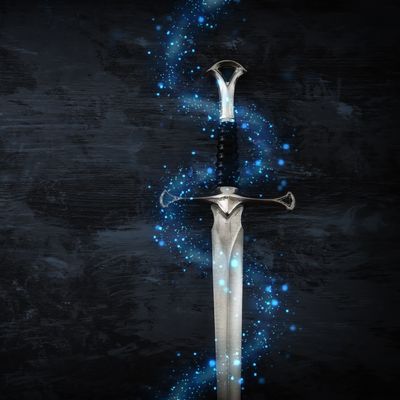The Watchers
The Kingdom of Keoland was founded in the year 342 CY, and, by 242 CY, had expanded to its present boundaries. It entered a period of rapid expansion thereafter that was marked primarily by the peaceful annexation of new lands. One territory that was much desired was the swathe of land to the east and northeast of the Rushmoors. The Kingdom formed an order of knights, known as the Knights of the March, to secure this territory and assure easy expansion into it. In the course of this conquest, the Knights of the March adopted the teachings of the philosopher and prophet Azmarender and took a new name for their order: the Knights of the Watch.
The Knights successfully pacified the lands east and northeast of the Rushmoors, and, in 161 CY, Keoland absorbed this swathe of land, naming it the Gran March. The duke of Dorlin awarded this fief to the Knights and tasked them with guarding Keoland’s northern borders. About this time, a group of knights formed a secret society within the Knights of the Watch; their concern over the ancient dangers lurking in the Rushmoors drove them to focus their attention there almost exclusively. These knights formally separated to form the Knights of the Malgari (or Darkwatch as they are commonly called) in 288 CY, during the reign of Rhola King Tavish I (the Great) of Keoland. During the reign of Rhola King Tavish II (the Blackguard) of Keoland (from 346 to 395 CY), Tavish II attached the Malgari to the Suel House Neheli in a political maneuver whose method and purpose are long lost to the sands of time. The Malgari still function in Keoland to this day, and many Knights of the Malgari maintain close ties with the Knights of the Watch (and vice versa). For example, the Margrave of Mandismoor, a renowned Knight of the Watch, is also a highly placed servant of the Malgari.
The Knights of the Watch are tasked with protecting the Sheldomar Valley from the incursions of the Baklunish of the west (including the barbaric Paynims and the more civilized “Westerlings”) and other threats as they may arise. While focused in Keoland, Gran March, Bissel, Geoff, and Sterich, the Knights draw potential members from throughout the Sheldomar Valley. The Watchers maintain castles, fortresses, strongholds, and towers along the border with Ket (in Bissel) as well as along the mountain ranges (the Barrier Peaks, Crystalmists, and Jotens) that border the Sheldomar Valley to the west. The headquarters of the Knights lies in Bissel (Pellak), while large strongholds are also maintained in Gran March (Hookhill) and Geoff (Hochoch). The Knights also maintain chapter houses in some of the other major cities of the Sheldomar Valley (like Niole Dra and Gradsul).
The Knights of the Watch follow a near-monastic school of teachings based upon the writings of the philosopher Azmarender. Azmarender studied the tale of Trilesimain, the Simple Knight, a standard tale told by bards throughout the Sheldomar Valley. From this tale (especially a section known as the Glorious Couplets), Azmarender derived a philosophy and code of duty commonly known as the Twelve and Seven Precepts. The Twelve Precepts govern how a knight should behave in his daily life.
While not commonly known to the average denizen of the Sheldomar Valley, the Twelve Precepts are not secrets and can be learned by anyone interested enough in the Knights. The Seven Precepts are closely guarded secrets, detailing “life beyond the self” and giving powerful insights into the physical and spiritual world. Knights learn these Seven Precepts as they advance in the organization, so higher ranking knights know more of the precepts than lower ranking ones. The mysterious Seventh Precept, which is said to contain ancient secrets about the creation of Oerth, is known only to the head of the knighthood, the Grandiose Imperial Wyvern (currently Hugo of Geoff). The teachings are not connected with any one specific religion, but they fit well with the philosophies espoused by the militant followers of St. Cuthbert, Pholtus, Allitur, Mayaheine, and especially Heironeous. The Knights consider the Church of Heironeous to be one of their strongest allies.
Reflecting the mysticism that forms the foundation of their order, the Watchers adopt fanciful titles as they advance in rank in the knighthood. The lowest ranking knights are known as Vigils (such as Resolute Vigil, Indomitable Vigil, etc.); as Knights advance beyond this lowest rank, they add to this base title, adding further adjectives and later replacing the Vigil title with that of a beast (advancing through ranks of land-based and then aerial mundane beasts, followed by more fantastical ones). From this confusing (to non-Knights) system of titles comes the phrase “frightful as a Watcher’s title,” denoting someone who wishes to appear more powerful or grand than they truly are.
The Knights are believed to number more than 6,500.
/src/campaigns/278979/9dba42d2-5605-4d60-85d9-b0a53639a7c1.webp)

